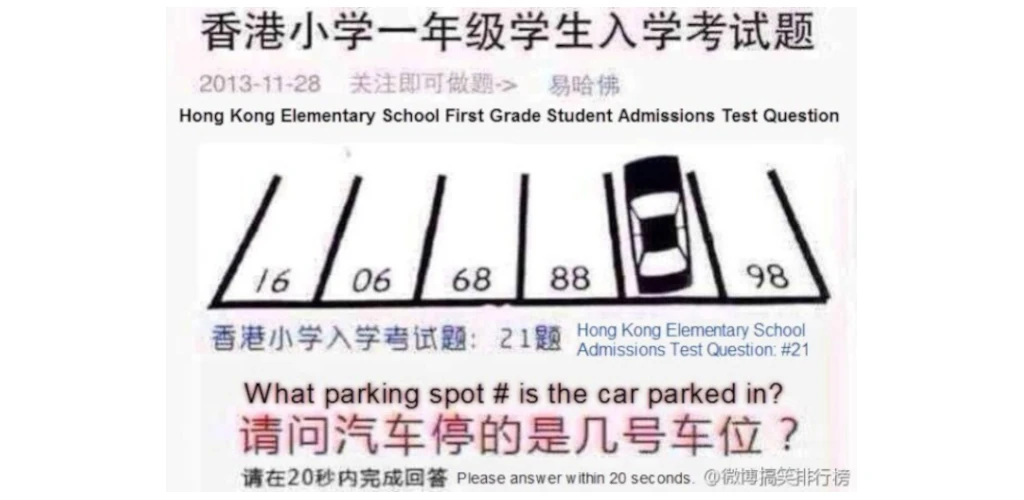The true sign of intelligence is not knowledge but imagination.
Albert Einstein
Last weekend, a daily newspaper featured an entrance exam question for Hong Kong elementary school students. The children had only twenty seconds to answer.
I couldn’t solve it within that time. I was too impatient to see the trick in the task and looked for the answer without bothering my head with the problem any longer. When I realized what it was about, the task seemed ingenious.
In the discussion following the article, people shared the logic they tried to use to solve the task. According to the article, the task was a math problem, and some said it didn’t measure mathematical skill but something entirely different.
However, it is said that mathematics is a universal language. The simplest linguistic tasks are those where you have to fill in the blank in a sentence (equation).
Someone asked indignantly if children should be prepared for the math olympiad from the first grade. Another laughed at the sight of university students struggling with the task: What children solve in seconds takes high school students several minutes, university students over half an hour, and professors a whole lifetime.
„We cannot solve our problems with the same thinking we used when we created them,“ Albert Einstein would say. So what is the real problem when we look at the task? We look at the parking lot from a bird’s-eye view.
To solve the problem, we need to mentally go to the parking lot and see it from the driver’s perspective. And we realize there is no problem at all.
In the movie Thrive, it is said that if the story doesn’t make sense, follow the money (43:10). It is a more precise definition of the idea that we should examine the methods in use.
To solve problems, we should have the ability to see things from another person’s perspective, not just from a bird’s-eye view. This applies to all areas of life, as imagination is more important than knowledge.

